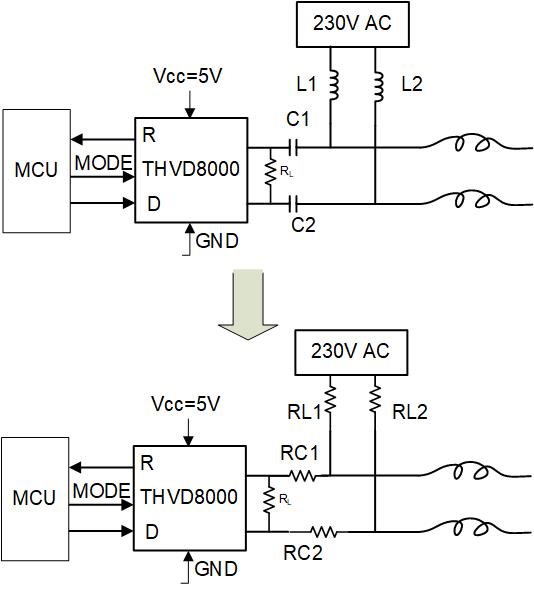Hello All:
I've already ordered 6 THVD8000 bare integrated circuits to start testing communications over 230 V a.c. line.
Our goal is to control up to 20 passive loads (roughly 1 A each) derived at regular intervals from a power line composed by two aluminum 16 mm2 twisted cables (line+neutral), fed from one end only. Kind of a row of 20 street lamps supplied from the same phase. We aim to switch each load on-off independently from commands issued to the power line from the feeding end. Reliability would be essential, we can not afford to loose data packets. Speed is not crucial, just reliability.
If anyone can share their experiences related to this subject I would be very grateful. I'll try to do it too.
Cordialmente,
Norbert.




